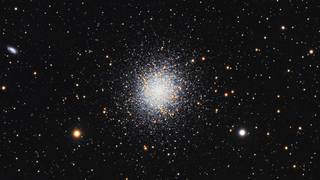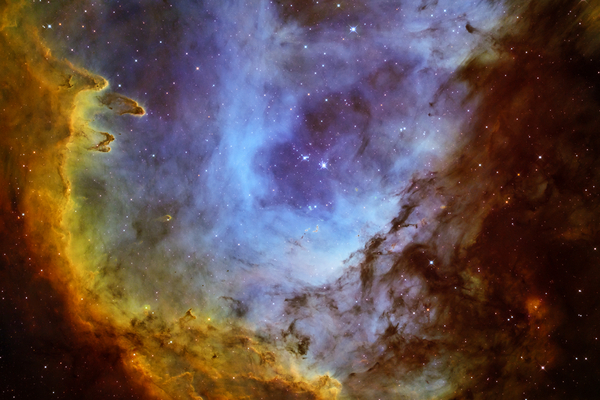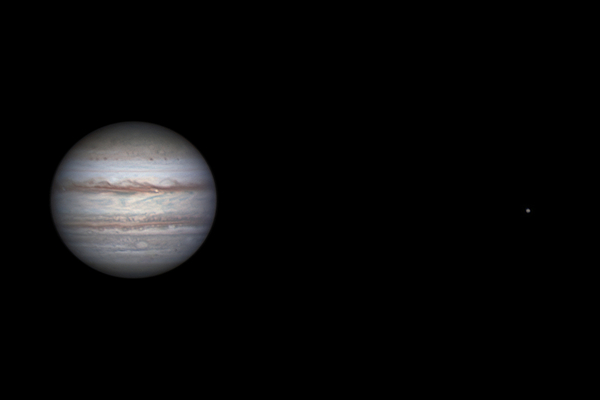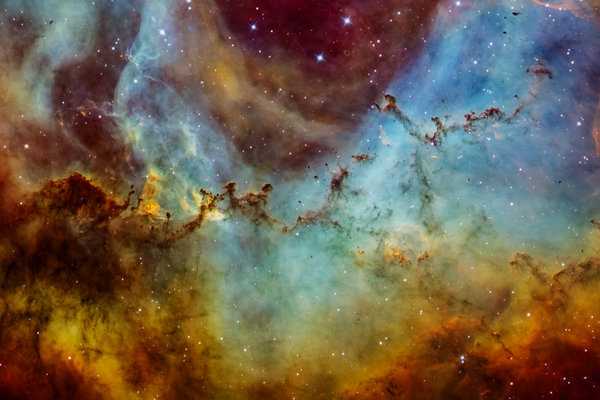Astrophoto of the month - June 2022 - Messier 13
Sharp shot of one of the northern hemisphere's brightest globular clusters from Lionel Majzik
A wonderful and special astrophotography image each month by Hungarian astrophotographers.
Popular target
Messier 13, or M13, is a well-known deep-sky object, a popular target for spring telescope demonstrations, as it is bright, its extent is not as small as that of other globular clusters, and even when observed through a smaller telescope, we can get a glimpse of the unique stars of its bright center.
What is a globular cluster?
A globular cluster is a concentrated set of many many stars. The interesting thing about the sky and the universe is that the stars are not distributed evenly or in a completely random pattern, but can be condensed in certain types of densities even within a galaxy. Astronomers mainly distinguish between two types of star densification, or cluster: the open cluster and the globular cluster. Open clusters are located along the main plane of the Milky Way, such as the Perseus twin cluster. In these, there are a few dozen, at most a few thousand stars, which are typically young, and the shape of the cluster is irregular. In contrast to the open cluster, the globular cluster is regular, spherically symmetric, and contains more than thousands of stars, which are typically older than the entire cluster itself. Globular clusters can be billions of years old, and their additional interesting feature is that they can be found almost anywhere in the Milky Way, or even around the Milky Way.
Why the M13 cluster? And what is that galaxy in the background?
Globular clusters are very similar. That's why it's worth trying to capture the most spectacular and brightest object with a small telescope, which - from Hungary - is the M13. However, taking a shot is never that easy, not even when an "easy" target is chosen from an astrophotographer's point of view. In the case of this photo, at the left edge of the image.it is worth taking a look at the small, distant spiral galaxy, NGC 6207, 30 million light-years away, to see the depth and how detailed the shot is.
And what tricks the author, Lionel Majzik, had to use to get this magnificent shot, can be read in his personal narrative:
The shortness of the summer nights does not favor astrophotographers, to say the least. It can often take years to collect the amount of photons required to be able to aesthetically process a fainter summer deep-sky object. I tried to avoid this obstacle by not choosing a faint nebula, but the brightest globular cluster that can be observed from Hungary.
The raw material for the published image was collected from Tápióbicske in Pest County in over six nights between July 7- August 14, 2021. The excellent Sky-Watcher 80/400 mm triplet apochromat and the ZWO ASI 183 MM Pro special monochrome camera developed for deep-sky objects, used together with an LRGB filter set to get a color image certainly helped me. During the processing, I only used the best shots, in the end I integrated 170 shots taken with of 3-minute exposure times, i.e. I used a total exposure time of 8.5 hours.
The globular cluster is an extremely wide-dynamic object. The central region can overexpose easily, while the outer, fainter stars are barely visible if not photographed properly, which is why I decided on 3-minute shutter speeds. This was the "golden mean", where I just avoided the burn-in of the central region, while the fainter peripheral stars had already appeared. This photographic challenge accompanied me throughout post-production. It is difficult to present Messier 13 in an enjoyable size at a focal length of 400 mm (which is still considered short for deep-sky objects), so I definitely had to consider a more substantial crop. I found the solution in how the images of the Hubble Space Telescope are processed ,the so-called "Drizzle" integration - a method based on mathematical foundation.. By applying "Drizzle", I doubled the size of the image, while keeping the content unharmed, so I could boldly apply the narrower crop. I was especially pleased that the apparent environment of the globular cluster is not surrounded by any dust cloud, so if we take a closer look at the background, we can marvel at a lot of tiny galaxies even more than 1 billion light-years away.
Lionel Majzik





